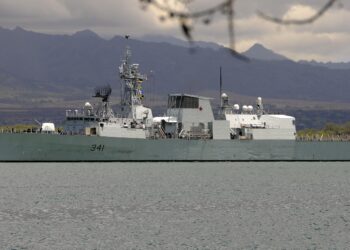US Air Force,
WRIGHT-PATTERSON AIR FORCE BASE, Ohio: Air Force and U.S. officials forecast a serious shortage of scientists and engineers.
That assessment was made by Joe Sciabica, executive director of the Air Force Research Laboratory, during a Regional Defense Forum here May 6.
About 370 business and government leaders attended the event to foster aerospace industry and small business understanding of what's happening inside the fence at one of the Air Force's largest and most diverse installations.
“We are facing a crisis in this nation,” Mr. Sciabica said, referring to a loss of technical talent and experience as an aging workforce of scientists, engineers and mathematicians prepares for retirement.
“What alarms me more is that the professors to teach the next generation are also retiring,” he added.
Mr. Sciabica's immediate challenge is to hire a highly specialized workforce to support consolidation of human performance and sensors research and development at Wright-Patterson AFB. Base Realignment and Closure 2005 decisions will bring about 1,200 military and civilian personnel here from several research sites across the country. Most will fall under AFRL's 711th Human Performance Wing and Sensors Directorate.
Historically, based upon lessons of previous BRAC rounds, a very small percentage of civilians elect to relocate when their positions are moved, said Jacqueline Fisher, director of the 88th Air Base Wing BRAC Office. So talent must be hired from other DOD installations, industry and academia.
The positions AFRL seeks include behavioral scientists, microbiologists, chemists, human factors engineers, physicists, electrical engineers, contracting and financial management personnel, Mr. Sciabica said.
Ms. Fisher said about 33 percent of new hires will have bachelor's degrees, 33 percent will have master's degrees while another 33 percent will have their doctorate.
People must be hired and in place to meet the BRAC public law deadline which requires missions up and in operation here by Sept. 15, 2011.
Mr. Sciabica said he's confident with strong community advocacy and partnerships that Air Force officials will meet the challenge and hire people with the right mix of skills to meet needs. The end-state vision is for Wright-Patterson AFB to become the home of “centers of excellence” for human performance and sensors research.
Filling the positions over the next few years will require a national recruitment effort, said Brad Antle, president of SI International, an industry representative who participated on the panel discussion.
“We need to convince people why Dayton is a great place to work and raise a family,” Mr. Antle said, noting he would happily trade his Washington D.C. area commute for one in the Dayton region.
Speaking directly to small business leaders in attendance, Mr. Sciabica underscored they play a vital role and explained how Air Force officials have small business advocates to help them understand how to compete for research and construction contracts. He mentioned www.FedBizOpps.gov and www.selltoairforce.org as two useful starting points, although networking and relationships are key.
“The biggest and by far best [way to do market a business] is one-on-one personal contact,” he said.
Mr. Sciabica acknowledged partnerships and collaboration with industry and the academic world is absolutely critical to AFRL and meeting current and long-term human resource challenges in science, technology, engineering and mathematics, or STEM, disciplines. He advocated funding for STEM education of youth, both locally, to capitalize on the presence of AFRL labs and mentors, and nationally. He also highlighted the success of AFRL summer hire and co-op programs.
“If we can get the younger generation into our research areas for a summer or two or three, they tend to get hooked,” he said.
The clincher, he added, is when they see the opportunity to translate their technical academic degrees into solving real-world problems for the nation.









